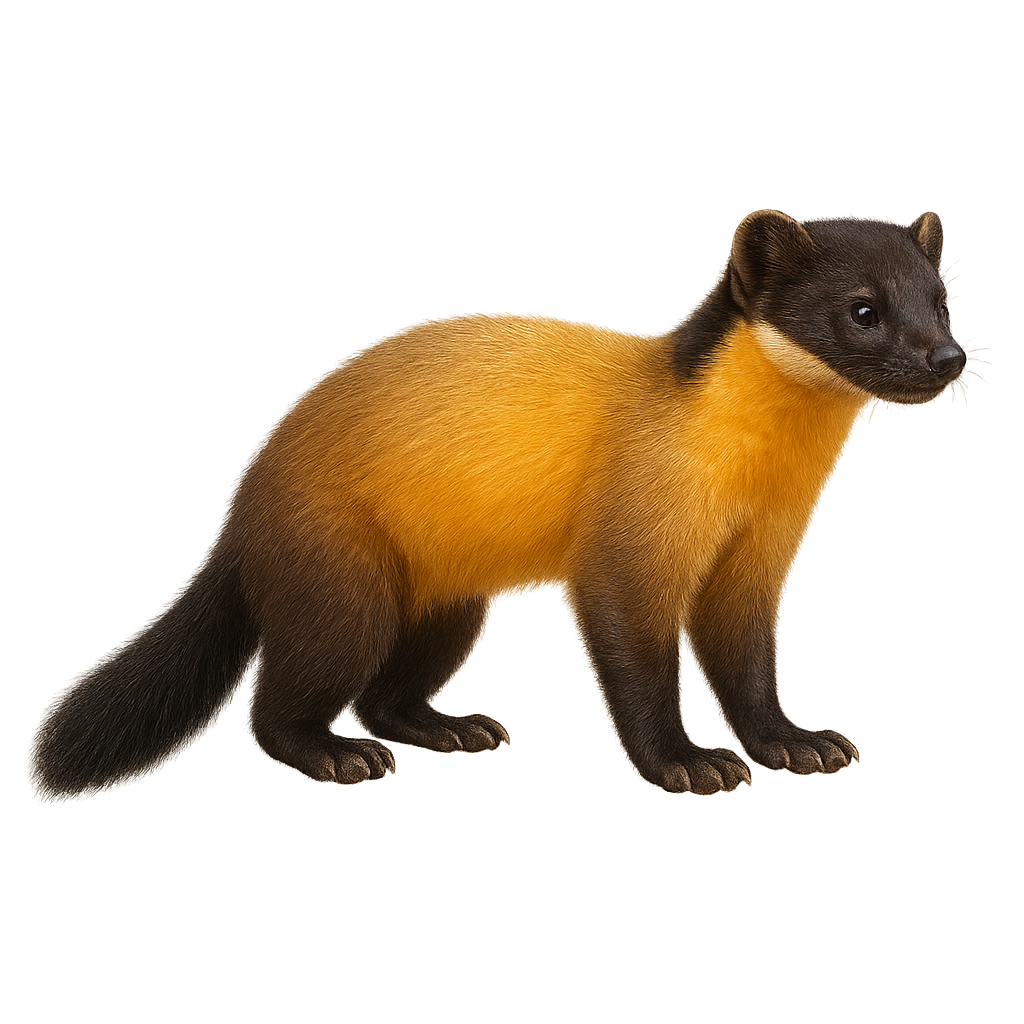Your wildlife photography guide.
Explore the yellow-throated marten in detail, study its behavior, prepare your shots.
Where to observe and photograph the yellow-throated marten in the wild
Learn where and when to spot the yellow-throated marten in the wild, how to identify the species based on distinctive features, and what natural environments it inhabits. The WildlifePhotographer app offers tailored photography tips that reflect the yellow-throated marten’s behavior, helping you capture better wildlife images. Explore the full species profile for key information including description, habitat, active periods, and approach techniques.
Yellow-throated marten
Scientific name: Martes flavigula

IUCN Status: Least Concern
Family: MUSTELIDAE
Group: Mammals
Sensitivity to human approach: Suspicious
Minimum approach distance: 10 m
Rut period: July to August
Gestation: 220-230 jours
Births: February to March
Habitat:
Tropical forests, temperate forests, mountains
Activity period :
Primarily active during the day, with peak activity in the morning and late afternoon.
Identification and description:
The Yellow-throated marten, Martes flavigula, is a mustelid with a distinctive yellow throat contrasting with its dark brown body. Agile and fast, it moves easily through the dense forests of Southeast Asia and the Himalayas. Omnivorous, it feeds on small mammals, birds, fruits, and insects. Its climbing ability and natural curiosity make it an effective predator. Although primarily terrestrial, it is also comfortable in trees. The yellow-throated marten is known for its relative sociability compared to other martens, often seen in small groups. It plays a crucial role in the ecosystem by regulating prey populations and dispersing seeds.
Recommended lens:
400mm – adjust based on distance, desired framing (portrait or habitat), and approach conditions.
Photography tips:
To photograph the yellow-throated marten, focus on dense forests where it is active during the day. Use a 400mm or longer telephoto lens to capture detailed images from a distance, as it is suspicious. Be patient and discreet, blending into the environment to avoid startling it. The best opportunities arise when it is feeding or exploring its territory. Take advantage of natural light filtering through the foliage to achieve images with interesting contrasts.
The WildlifePhotographer App is coming soon!
Be the first to explore the best nature spots, track rutting seasons, log your observations, and observe more wildlife.
Already 1 430 wildlife lovers subscribed worldwide

